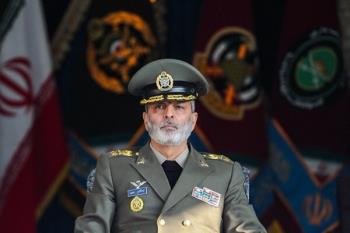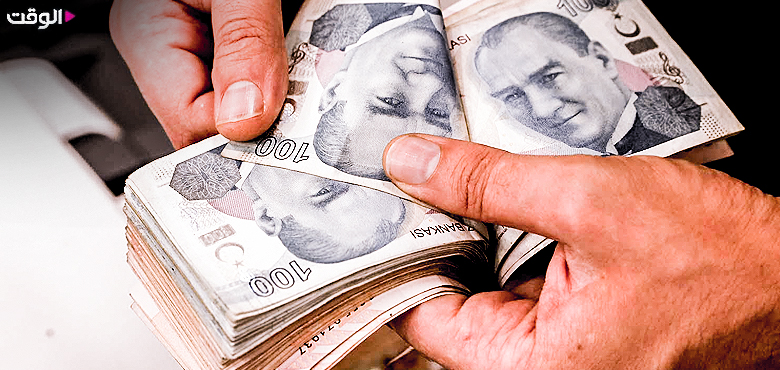Alwaght- The Turkish national currency lira price slump set a new record following remarks by President Recep Tayyip Erdogan about interest rate cuts and implementation of his monetary orders by the central bank. While the central bank was struggling to keep the market on 10 liras for each US dollar, on Friday each dollar was dealt 11.118 liras, the lowest price of the national currency against dollar in the whole history of the modern Turkey.
The historic crash of the lira comes at a time when there have been two approaches to the issue over the past few years. On the one hand, Erdogan believes that raising interest rates has devalued the lira and caused inflation, and that the central bank should cut interest rates further. On the other hand, many economists see the interest rate cuts are the root of inflation and the main factor behind lira price slump, as well as investment money withdrawal from the country.
Regardless of what factors may be the main cause of Turkey's economic turmoil, the important point is that the continued lira drop and consequently rising inflation, unemployment, and declining foreign investment could lead to a widespread economic crisis in the country. As the economic crisis and financial recession in Turkey intensify, Erdogan and the ruling Justice and Development Party (AKP) could certainly be the key victims, and in the upcoming parliamentary and presidential elections, they will meet the result of their poor performance by low turnout of the citizens and probably loss.
Low inflation, flourishing economy behind Erdogan's two-decade stay in power
Although the current economic crisis in the form of surging inflation, unemployment, and the devaluation of the lira have become a bad headache for Erdogan, these variables since 2002 have been the main driving force for his stay in power and acting as the face of the Turkish policy. After 2002, the AKP set up an accurate program and showed effective performance in administration of the country. Remarkable growth rates, higher GDP per capita, flow of foreign investment, inflation control, and higher employment rates were the most important areas of AKP and Erdogan success in the first decade of rule.
For example, the growth rate in Turkey in six years, from 2001-2007, increased by an average of 9.6 percent per year, while 25 members of the European Union had an average growth rate of 2.1 percent during this period. The per capita output increased from $3,562 in 2002 to $9,629 in 2007. At the same time, another significant economic success of the Erdogan government was attracting foreign investment. From 1980 to 2003, Turkey attracted $18 billion in foreign direct investment. Only in 2003, the figure was about $3.1 billion, rising to $20 billion in 2006 and more than $30 billion in 2008. During this period, Turkey ranked first in attracting foreign investment in West Asia.
At the same time, Erdogan's government was very successful in curbing inflation, turning the double-digit inflation rate of 70 percent, which Turkey has been suffering from for years, into one of the lowest inflation rates, 5.7 percent in 2008, in the region. The Islamist AKP showed such a strong performance in curbing inflation for the benefit of the poor and middle class, creating jobs by attracting investment, reducing the unemployment rate to 9.9 percent in 2008, increasing the exports, considering the rights of the religious and ethnic groups, and making reforms that it remained the dominant power for about two decades on the Turkish political stage.
Erdogan and myth of interest rate: posing as an economic expert
The attempted military coup of 2016 that sought to topple Erdogan and consequently his face-off with the opposition ushered in Turkey's entry to a period of economic crisis. Then came the restrictive American economic measures and Ankara and the Covid-19 pandemic that unprecedentedly led to Turkish economic setbacks in various indices. In the middle of the economic crisis, one dominant debate is the interest rate. Erdogan insists that the high interest rates are the causing this predicament but economists highlight higher interest rate as the key to bring foreign investors to the Turkish economy for an exit from the crisis.
Erdogan became target of tough criticism for his interventions in the central bank policies and decisions and insistence on lower interest rates. In his latest speech in a gathering of the AKP supporters on November 18, Erdogan lashed out at high interest rates, saying that those in favor of the increasing the interest rates have not right to criticize the current conditions.
“I cannot and will not stand on this path with those who defend interest rates,” Erdogan said, adding: "We look into the case in line with religious orders and set our measures on this base. As long as I am serving as the president, I will fight inflation and interest rates to my last breath. The interest rate is the cause and the inflation is the effect in this problem."
On March 20, Turkey saw its third central bank governor, Sehap Kavcioglu, in two years appointed by Erdogan, replacing Naci Agbal who was basically against interest rate cuts. Kavcioglu and his team cut the interest rate by 2 percent in a shock to the market, causing a slump in lira price. Each dollar was dealt 10 liras, up from 8 liras, and by October's end the inflation rate increased to 19.8 percent. This came while in October 2020 the inflation rate was recorded 11 percent while coronavirus crisis was at its height.
Following recent Erdogan comments, the central bank cut the interest rates 1 percent, triggering new drop in lira value. In the latest dealing, each dollar was traded 11.118 lira, showing a 6.14 percent increase.
When the strength spot becomes Achilles heel
Although the economy has been the trump card of Erdogan and the ruling party for about 15 years, in recent years this source for upper hand has become the biggest concern of the Turkish president. This has caused hysterical reactions to this issue. Erdogan frantically changed the central bank governors in response to the crisis. Change of governors, analysts say, is meant to escape the responsibility for the economic fall, to save his chances for victory in 2023 presidential elections.
In the current situation, the devaluation of the lira, the inflation rate of nearly 20 percent, and unsettled economic decisions more than ever bring Turkey face to face with the important issue of the possibility of outflow of foreign capital. In the past few years, above-15-percent inflation has dissuaded foreign investors from investing in Turkey. Meanwhile, a 19 percent interest rate was attractive to foreign investors but cutting it to 15 percent is likely to frighten away them.
This can leave an even more destructive impact on the Turkish economy in the near future. Though Erdogan with populist slogans and exploitation of the religious sentiments of the citizens seeks to paint himself a defender of the Islamic-style interest rate, the fact is that high inflation rate and interest rate cuts combined can, as many economists suggest, make way for foreign capital escape, and ultimately more lira price drop and even economic collapse. This means that the same thing that after 2002 lifted up Erdogan and the AKP's popularity and brought about for them back-to-back victories is now an Achilles heel for the Turkish leader and his party. If this messy economic situation continues, AKP and Erdogan should expect their defeat in upcoming elections.



























